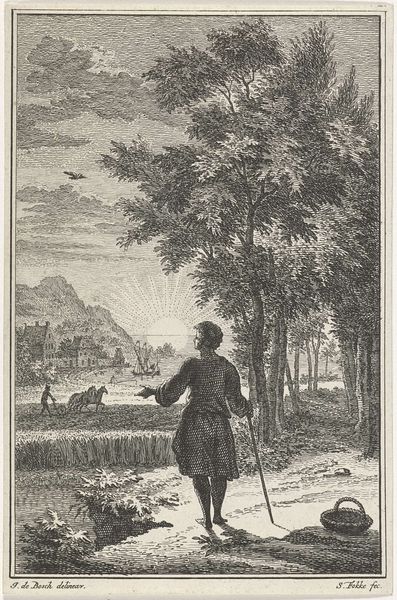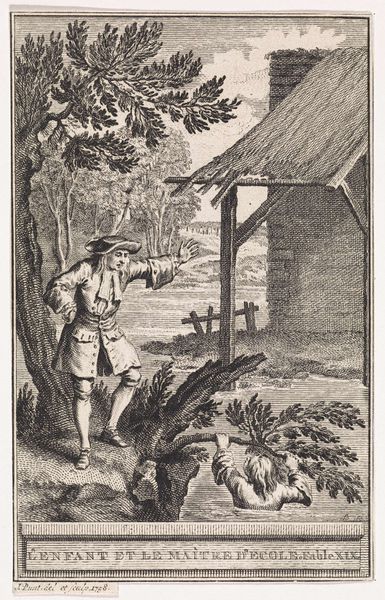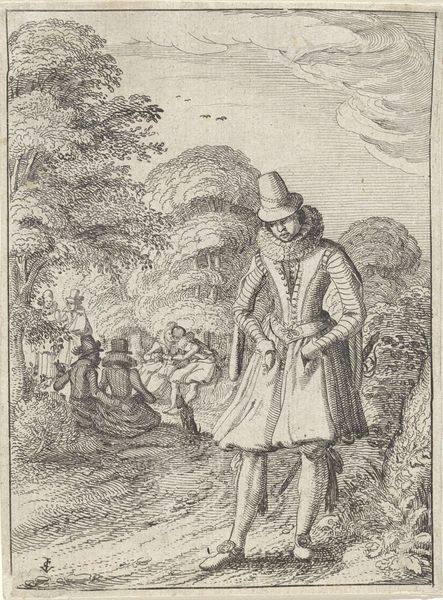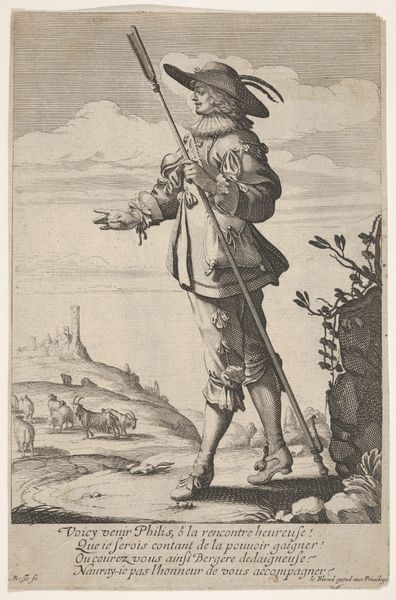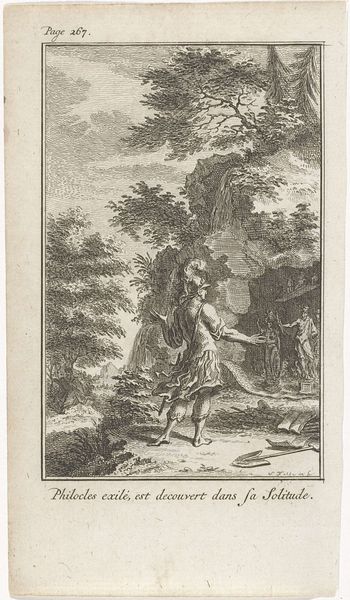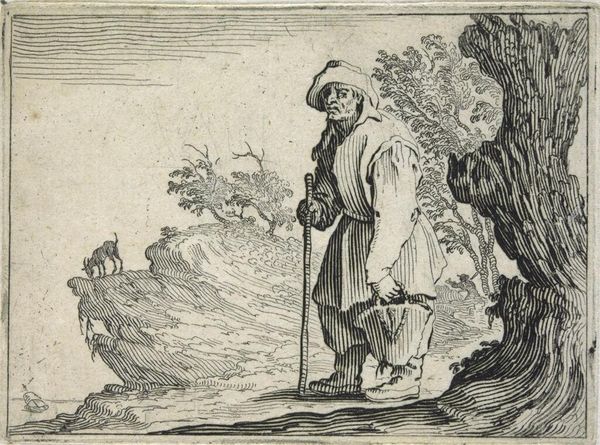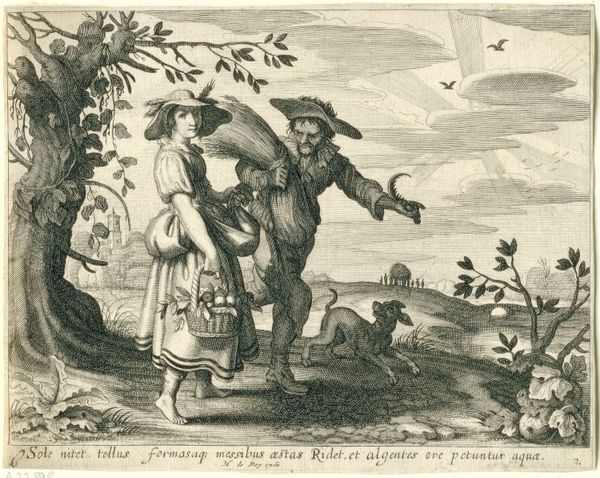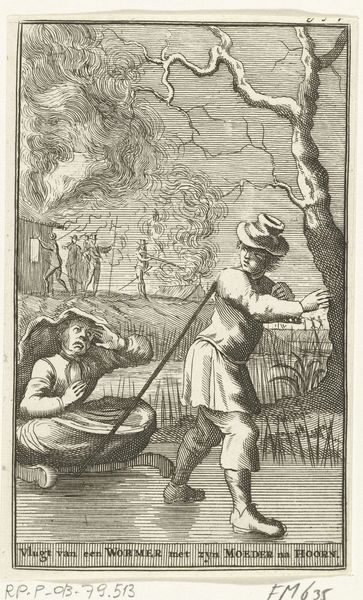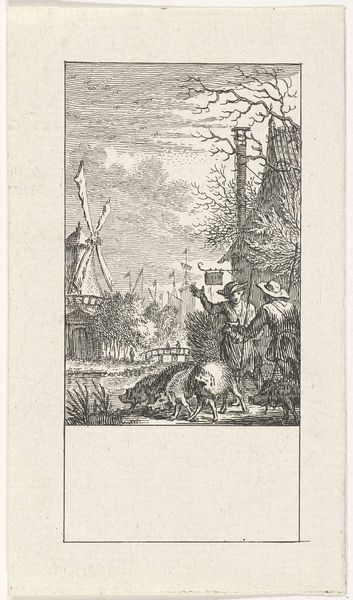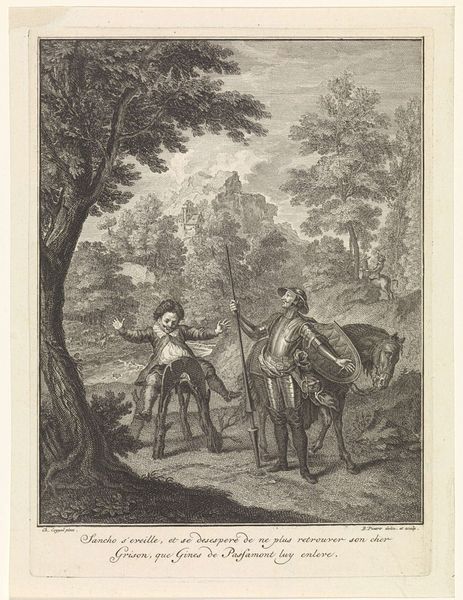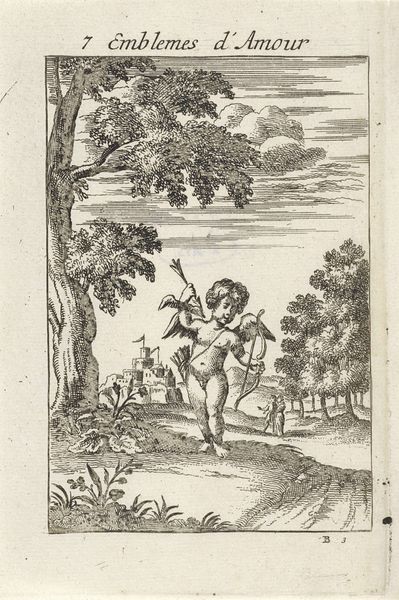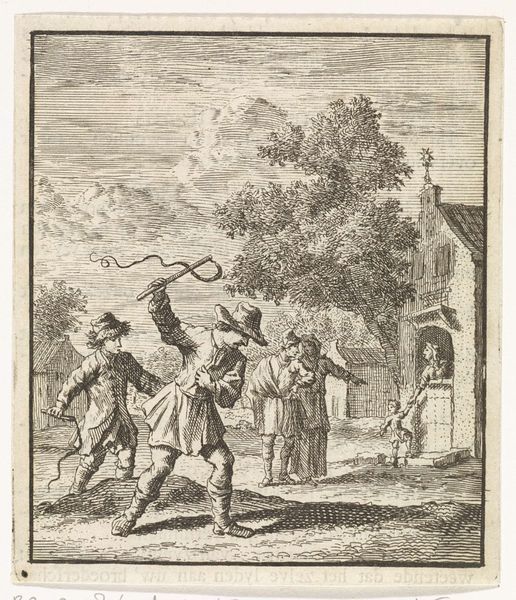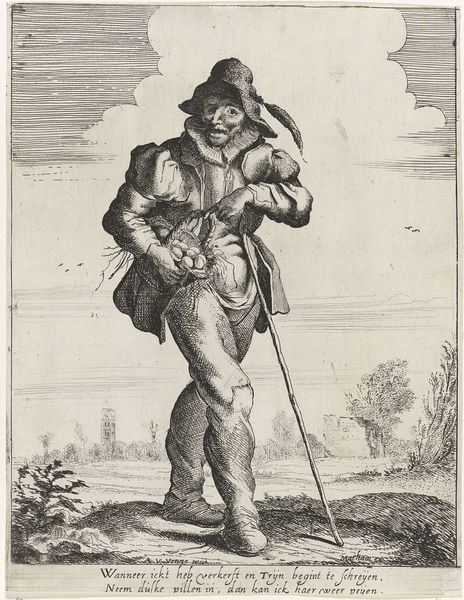
print, engraving
# print
#
old engraving style
#
landscape
#
figuration
#
line
#
genre-painting
#
history-painting
#
engraving
#
realism
Dimensions: height 146 mm, width 98 mm
Copyright: Rijks Museum: Open Domain
Curator: Looking at this print, titled "De zwaluwen en de vogeltjes," made sometime between 1741 and 1820, currently held here at the Rijksmuseum... the first thing that strikes me is its detailed, almost industrious depiction of rural life. Editor: Yes, the labor here is palpable, isn't it? I see the fine, repetitive lines that constitute this landscape. Look at how they define the texture of the tilled soil and give shape to the garments of the sower. The engraving itself speaks volumes about craft. Curator: Exactly! Abraham Delfos gives us not only a genre scene but a glimpse into 18th-century agrarian practices, framed within the socio-economic context of the period. The scattering of seed, the waiting birds... it all speaks to cycles of dependence. It makes you wonder, who was this made for, and what conversations did it spark? Editor: And consider the scale of production; prints like this would have circulated widely. Each line painstakingly etched, each print pulled, disseminating not just the image, but an idea of labor, class, and our relationship to the land. Look at the labor depicted in contrast to that tree laden with birds, symbols perhaps, of the fruits of one’s labor! Curator: You're right to emphasize its dissemination. Prints played a key role in shaping public opinion and influencing taste during this era. Artists like Delfos catered to a growing middle class with an appetite for accessible art reflecting their values and aspirations. Editor: Precisely. The value wasn't just aesthetic. It was in the accessibility, the reproduction, and the way it brought a slice of the world into people's homes—or perhaps idealized a world many only knew from a distance. How many hands passed the print from creator to consumer? Curator: Thinking about it, I see the print as a reflection of larger political discourse, perhaps advocating a return to simpler times. The detailed depiction of work juxtaposed against the seemingly idyllic landscape gives one pause, doesn’t it? Editor: It’s tempting to see romanticism, but it really is about the materiality of its production and its purpose as a tool for engagement. It gives us space to think about the tangible and socio-political contexts and the relationship between them. Curator: It really highlights the complexity inherent in even seemingly simple images. Thank you for sharing those insights! Editor: A pleasure! There is much here that still connects us today, doesn’t it?
Comments
No comments
Be the first to comment and join the conversation on the ultimate creative platform.
